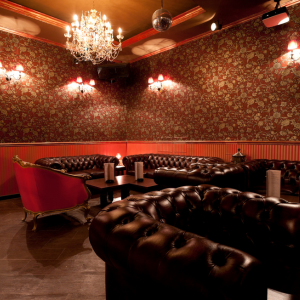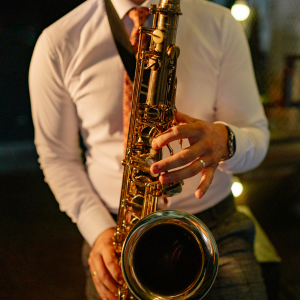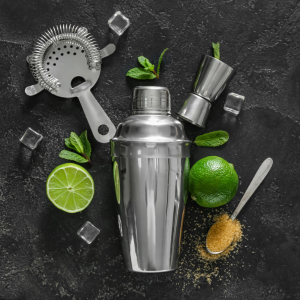A speakeasy is a secret bar or nightclub that operated illegally during the Prohibition era in the United States (1920-1933). The term "speakeasy" came from the need for patrons to "speak easy" or quietly to avoid drawing attention to these hidden establishments, which often required a secret code to enter. Inside, people could enjoy alcoholic drinks, music, and entertainment in defiance of the alcohol ban. Today, the term may also refer to modern bars or restaurants that replicate the style of these historical venues, but they operate legally and openly.
As the hospitality industry continues to evolve, the fascination with speakeasies has become more and more prevalent. These clandestine establishments have a rich historical legacy, which continues to influence modern bar management in various ways. This article will delve into the captivating world of speakeasies, their origin, and their enduring impact on the bar industry.
Defining A Speakeasy Bar
A speakeasy bar, in essence, is an establishment inspired by the secretive drinking venues that proliferated across the United States during the Prohibition era. These bars typically feature a clandestine entrance, often concealed behind an unassuming facade—such as a wall of books, a telephone booth, or even blending seamlessly within a retail storefront.
Modern speakeasies have carved out a niche for themselves in the competitive bar industry by capitalizing on their air of mystique. While they typically offer a diverse range of drinks, including specialty cocktails, the lure of a speakeasy lies primarily in its enigmatic entryways and intimate environment.
History Of Speakeasy
The first speakeasies were created out of necessity during the Prohibition Era, a period of alcohol restriction in the United States that lasted from 1920 to 1933. Let's dive into the history of speakeasies to understand their development.
The Prohibition Era And The Birth Of The Speakeasy
When the 18th Amendment to the U.S. Constitution prohibited the production, transportation, and sale of intoxicating liquors, speakeasies sprouted up in response. They operated illegally, selling prohibited alcohol to their patrons. Speakeasies flourished during the Prohibition Era mainly due to public opposition to the amendment and the insatiable demand for alcohol.
The Post-Prohibition Legacy Of Speakeasies
After the repeal of Prohibition in 1933, speakeasies' popularity began to wane. However, their unconventional mystique endured, luring patrons seeking a unique experience. While the name "speakeasy" originally referred to the need to "speak easy" or quietly about these secret establishments, it has now become synonymous with hidden, chic bars.
The Relics Of The Speakeasy Age
The speakeasy's lasting allure lies mainly in its characteristic features, which continue to inform modern bar management techniques.
Hidden Entrances And Secret Codes
A hallmark of speakeasies was their concealed entrances and access codes, which were required to grant entry to patrons. Establishments used doors disguised as bookcases, telephone booths, and even sliding walls. This secretive nature provided an added layer of excitement and anticipation—a marketing tactic that modern speakeasy-style bars still use today.
In addition to hidden entrances and codes, speakeasies often employed numerous innovative measures to maintain their secrecy. Think secret stairways, disguised windows, and hidden rooms - all contributing to the allure and excitement of these underground establishments.
Modern-day speakeasies emulate this element of secrecy and mystery, not just in their entrances but also in their interiors and service offerings. The aesthetic incorporates hidden cubbies, velvet curtain partitions, and, at times, even menus hidden in books, capturing the essence of a fascinating chapter in American history.
Ambiance And Decor

The ambiance and decor within speakeasies actively contribute to their charm and appeal. These elements are no mere afterthought but an integral part of the overall experience these establishments seek to create. The purveyors intentionally curate every detail—from the low lighting that allows for privacy and intimate conversations to the deliberately chosen vintage elements that give a sense of authenticity and a nostalgic nod to the Prohibition era.
These venues often feature antique furniture, soft velvet drapes, brass fittings, gramophones, jazz memorabilia, vintage wall art, and tastefully weathered mirrors. Distinctive design elements and the imaginative reuse of objects are common, adding depth and enriching the narrative of the past being portrayed.
The atmosphere inside a speakeasy bar is usually intimate and dimly lit, emphasizing vintage decor that harks back to the Roaring Twenties. It also often boasts a creative and expertly curated beverage menu, showcasing various innovative and classic cocktails that transport patrons to a bygone era. The allure of a speakeasy bar lies in its enigmatic nature, as these establishments transform an ordinary night out into a thrilling adventure rich with nostalgia, history, and a taste of the exotic.
Elegant barware showcases an additional luxurious touch prevalent within speakeasy interiors. Cocktail glasses, polished brass shakers, vintage bar spoons, and heavily weighted, baroque-inspired liquor decanters define the beverage service experience, adding an extra layer of sophistication.
The operators craft a holistic sensory journey within these hidden bars. The nuanced lighting, choice of music, tactile surfaces—all these elements come together to evoke a befitting environment, supporting the narrative of a secretive, exclusive world apart from the ordinary. Emphasizing these intricate details reinforces the uniqueness of modern speakeasies, melding the best parts of an iconic past with the necessities of contemporary hospitality. This dedication to creating an exceptional ambiance provides considerable value to the guest experience, thereby setting these establishments apart in a competitive industry landscape.
Modern Day Speakeasy
In the 21st century, speakeasy-inspired bars enjoy a worldwide presence, with several renowned establishments maintaining the aura and allure of the original concept. Here are a few notable examples.
Please Don't Tell, New York City
In the bustling city of New York, Please Don't Tell (PDT) retains the purest speakeasy essence by disguising its entrance as an old-fashioned phone booth located inside a hot dog shop. PDT is revered for its inventive cocktails and cozy ambiance.
The Mayor of Scaredy Cat Town, London
In London, a high-capacity fridge door in a hip breakfast eatery leads guests into the clandestine world of The Mayor of Scaredy Cat Town. This cheekily named speakeasy bar offers a cozy nook in the city's bustling heart, oozing speakeasy charm and serving up tasty craft cocktails.
Flask, Shanghai
Located behind an unassuming sandwich shop, Flask in Shanghai houses its cocktail bar within a vintage Coca-Cola vending machine, in a nod to American Prohibition culture. Inside, the bar juxtaposes the rustic with the contemporary, offering a sophisticated drink menu to its visitors.
SubRosa, Melbourne
In Australia, Melbourne's SubRosa entices patrons with its hidden location and prohibition-themed drink list. Exuding sophistication, it draws discerning drinkers into its world with a meticulously crafted menu and a personalized drinking experience through table-side mixology.
The Little Red Door, Paris
Paris's Little Red Door, a speakeasy bar well-known throughout Europe, enthralls visitors with its art-inspired cocktails and quirky interior decor, vaguely reminiscent of Alice's Adventures in Wonderland.
While all of these modern establishments retain the secrecy and elegance of the original speakeasies, they also impart their distinctive spin on the concept, tailoring it to local tastes and culture, therefore ensuring a unique and captivating experience.
Speakeasies And Bars
The impact of speakeasies on modern bar management stretches far beyond their clandestine entrances and stylish interiors.
Speakeasies And The Jazz Age

Jazz and speakeasies are iconic symbols of the Roaring Twenties, both thriving during the Prohibition era. Jazz served as the rebellious and infectious soundtrack of the era, with its complex melodies and rhythmic patterns becoming the heartbeat of the period.
Speakeasies, hidden behind unassuming facades, were where people gathered in defiance of the alcohol ban. These venues offered a unique platform for jazz musicians like Louis Armstrong, Duke Ellington, and Ella Fitzgerald to experiment, perform, and gain wider recognition. Their presence in speakeasies not only defined the era but also played a critical role in jazz's widespread popularity, leaving an indelible mark on American culture.
Today, modern speakeasy-inspired bars continue to pay homage to this historic connection by incorporating live jazz performances, creating an immersive experience that transports patrons to the Prohibition era. The syncopated beats and melodious tunes of jazz, whether from a live band or a carefully curated playlist, evoke the vibrant yet relaxed ambiance of that time, bridging the past and present. This fusion of jazz music and the speakeasy concept enhances the overall authenticity of these contemporary establishments, allowing patrons to not only savor great cocktails but also immerse themselves in the cultural ethos of the Roaring Twenties.
Speakeasy And Drinking Culture

Undoubtedly, one of the speakeasies' most significant contributions to modern-day drinking culture lies in their pioneering role in the development and popularization of the craft cocktail movement. Necessity was indeed the mother of invention as prohibition-era speakeasies sought to enhance the taste of the poor-quality, homemade spirits readily available during the time. This coerced mixologists to get creative, introducing exotic ingredients and experimenting with different mixing methods to mask the harsh flavors.
Thus, the birth of craft cocktails took place, using unique and sometimes unconventional ingredients such as rare spirits, homemade bitters, fresh fruits, spices, and even unique garnishes to concoct aesthetically pleasing and flavorsome beverages. This experimental spirit continues to live on in today's speakeasy-inspired bars, where mixology is adopted as more than simply a profession but an art form.
Modern mixologists are constantly pushing the boundaries of traditional bartending, drawing inspiration from the speakeasy era and utilizing innovative bar tools such as cocktail shakers, jiggers, and muddlers. With these utensils, they infuse spirits with unconventional flavors, employ molecular techniques, and put contemporary spins on classic cocktails. This influence of speakeasies on today's drinking culture is evident, and cocktail enthusiasts worldwide reap the benefits of these creative approaches to mixology.
Thus, the modern speakeasy is not only a conduit for a memorable and nostalgic atmosphere but also a showcase of the evolution of cocktail culture. They stand as a testament to the enduring appeal of a well-crafted drink and an innovative and playful approach to mixology.
How To Open A Speakeasy Bar
Opening a speakeasy bar requires thoughtful planning and attention to detail. It requires choosing a theme rooted in the Prohibition era that influences the design, menu, and service while adhering to contemporary legalities. Here are some pointers:
- Concept Development: Your speakeasy should have a unique theme or backstory that resonates with the Prohibition era. This concept will guide practically all aspects of your bar, including its design, menu, and service.
- Location And Entrance: Find a location that can accommodate an unassuming and hidden entrance. It could be behind a bookshelf in a bookstore, through a 'fake' fridge door, or even down an obscure alleyway. The intrigue starts with finding the place.
- Interior Design: The design should reflect your concept and tell a story. Emphasize an intimate, low-lit atmosphere and vintage decor. Set the mood, use speakeasy-era elements like antique furniture, vintage wall art, plush seating, and elegant barware.
- Drinks And Menu: The drink menu should mainly include innovative blends and cocktails that were popular during the Prohibition era. Consider employing a skilled mixologist to craft this menu and consistently deliver top-quality drinks.
- Entertainment: Give a nod to the jazz era, as music was vital to the speakeasy culture. Live performances will add authenticity, but a carefully curated playlist can also create the desired ambiance.
- Marketing: Remember that a speakeasy should be secretive but not unknown. Rely on word-of-mouth, subtle social media teasers, or invitations to create a buzz without revealing too much upfront.
- Service: Offer top-tier service. The staff should be educated about the drinks and speakeasy history and be able to maintain the vibe of the speakeasy environment. An excellent service can significantly enhance the overall guest experience.
- Legalities: Even though your bar mimics an unlawful establishment of the past, make sure it adheres to all current legalities in your area regarding selling alcohol, noise pollution, and safety regulations.
By carefully considering the points above, you can create an authentic speakeasy bar experience that offers guests exclusivity, nostalgia, and an unforgettable night out.
The Everlasting Fascination With Speakeasies
The enigmatic world of speakeasies holds a special place in people's hearts and continues to influence today's bar management practices. Their rich history, intriguing features, and unforgettable ambiance offer inspiration to operators who seek to create unique experiences for their patrons.
While the speakeasy concept has evolved over the past century, one thing remains constant: the spirit of innovation and anticipation that these establishments embody continues to captivate individuals worldwide, ensuring their timeless appeal.









